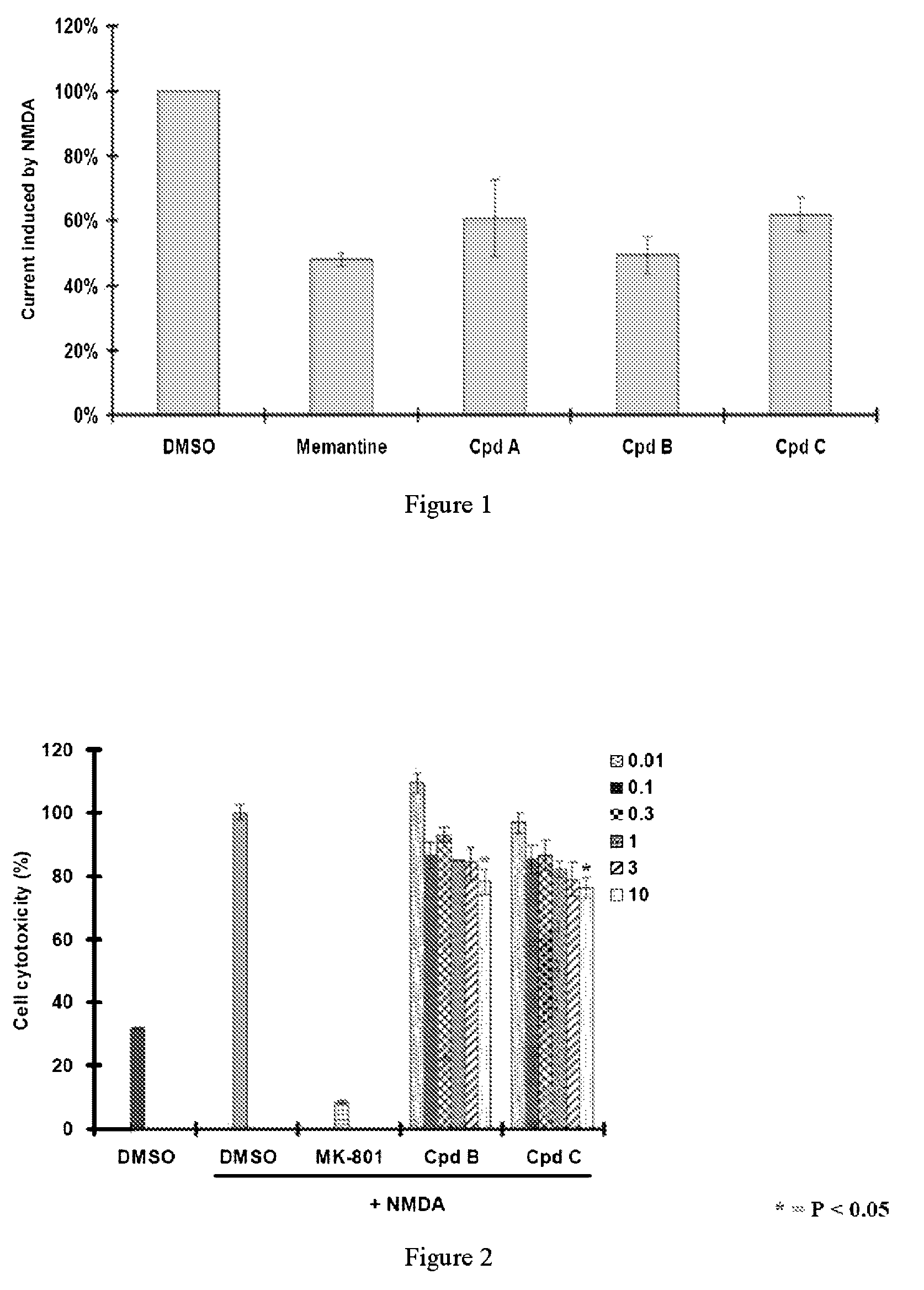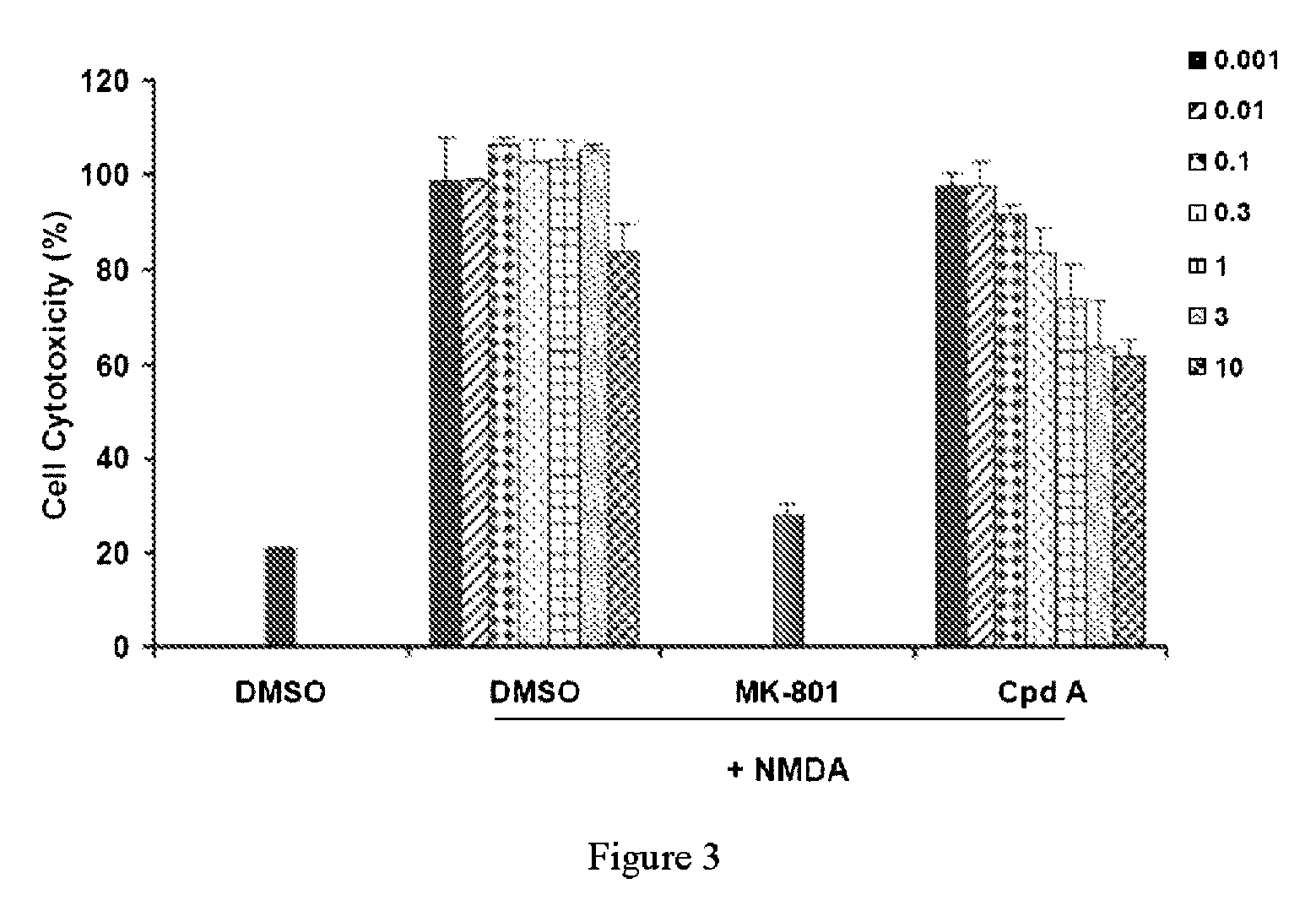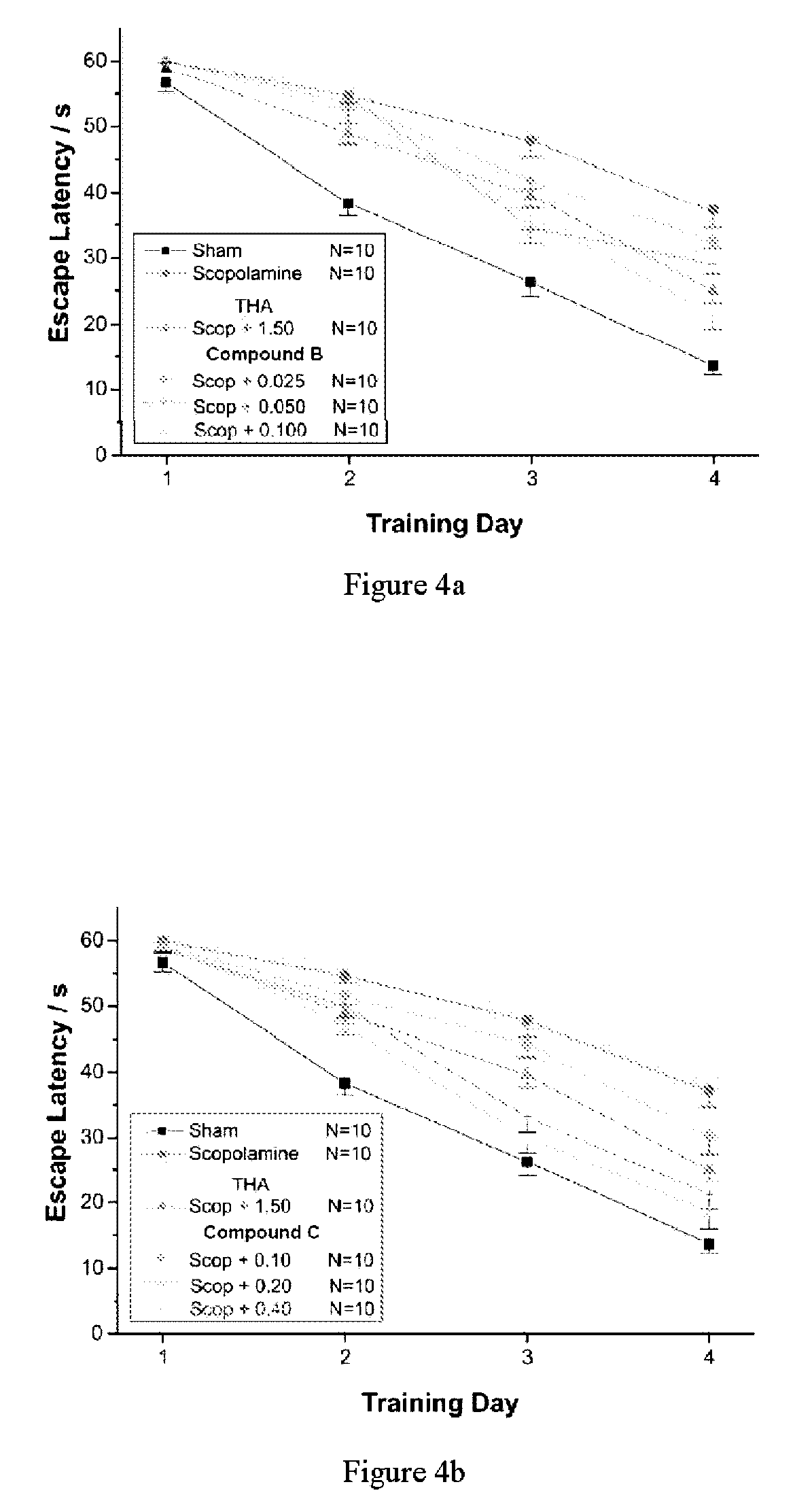Heterodimers and methods of using them
a technology of heterodimers and tetrahydroacridines, applied in the field of new drugs, can solve the problems of loss of atp, neuronal damage, and excess casup>2+/sup>influx, and achieve the effects of improving cognitive ability, preventing stroke, and improving cognitive ability
- Summary
- Abstract
- Description
- Claims
- Application Information
AI Technical Summary
Benefits of technology
Problems solved by technology
Method used
Image
Examples
example 1
In Vitro Inhibition of AChE and BChE
[0054]The in vitro inhibition of the enzymes acetylcholinesterase (AChE) and butyrylcholinesterase (BChE) were assessed. BChE, like AChE, breaks down acetylcholine (ACh) but is found in plasma and other organs such as the liver, skin and gastrointestinal tract. Since BChE inhibition may lead to unwanted side-effects, the compounds of Formula I were evaluated for: (i) potent inhibition of AChE and (ii) a strong selectivity for AChE over BChE.
[0055]The anti-acetylcholinesterase activity of the compounds was demonstrated by performing a cholinesterase assay and measuring enzyme inhibition using a spectrophotometric method based on the Ellman method. The enzymes, AChE and BChE, used in the inhibition studies were prepared from the cortex and serum of decapitated rats, respectively. The concentration required to yield 50% enzyme inhibition (IC50) was determined for each of the novel compounds of Formula I. The results are presented in Table 1.
[0056]
TAB...
example 2
NMDA Receptor Antagonist Activity
[0058]Whole cell patch clamp studies were conducted to measure the ion current across the surface of hippocampal neurons in the presence and absence of the novel compounds to demonstrate NMDA receptor activity. The NMDA receptor is a gated ion channel, which allows inflow of current during a nerve impulse. Antagonists to the receptor would prevent the inflow of current. Memantine, a known NMDA antagonist was used as the positive control.
[0059]Hippocampal neurons from embryonic day 18 rats were isolated, trypsinized, plated onto 35-mm plates at a density of 3×104 cells / plate and cultured in Neurobasal medium (NB) supplemented with B27 nutrient. DIV10-14 rat hippocampal neurons were treated with NMDA (50 μM) in the absence or presence of the novel compounds (Cpd A, B and C) (10 μg / mL). Data is presented as % of NMDA-induced current. DMSO is the solvent control. FIG. 1 shows that compounds A, B, and C decreased NMDA-induced current in hippocampal neuron...
example 3
Novel Compounds Protect Rat Cortical Neurons Against NMDA Excitotoxicity
[0060]The compounds were subjected to NMDA survival assays to investigate their ability to prevent NMDA receptor-induced excitotoxicity. The NMDA survival assay was performed to measure the degree of protection provided to cortical neuronal cells when treated with the compounds prior to an ischemic insult.
[0061]DIV10 cortical neurons were treated with NMDA (20 μM) in the presence of compound (cpd) B or C (μg / mL). LDH release in the medium was detected at 24 hr after treatment. DMSO was used as the solvent control, while MK-801 (10 μM) is a known NMDA antagonist. FIG. 2 demonstrates that cpds B and C were able to protect rat cortical neurons against NMDA excitotoxicity.
[0062]DIV11 rat cortical neurons were treated with NMDA (20 μM) in the absence or presence of compounds (MK-801, 10 μM; compound A, 0.001-10 μg / mL). LDH release in the medium was detected at 24 hr after treatment. DMSO was used as the solvent contr...
PUM
| Property | Measurement | Unit |
|---|---|---|
| total volume | aaaaa | aaaaa |
| optical purity | aaaaa | aaaaa |
| temperature | aaaaa | aaaaa |
Abstract
Description
Claims
Application Information
 Login to View More
Login to View More - R&D
- Intellectual Property
- Life Sciences
- Materials
- Tech Scout
- Unparalleled Data Quality
- Higher Quality Content
- 60% Fewer Hallucinations
Browse by: Latest US Patents, China's latest patents, Technical Efficacy Thesaurus, Application Domain, Technology Topic, Popular Technical Reports.
© 2025 PatSnap. All rights reserved.Legal|Privacy policy|Modern Slavery Act Transparency Statement|Sitemap|About US| Contact US: help@patsnap.com



